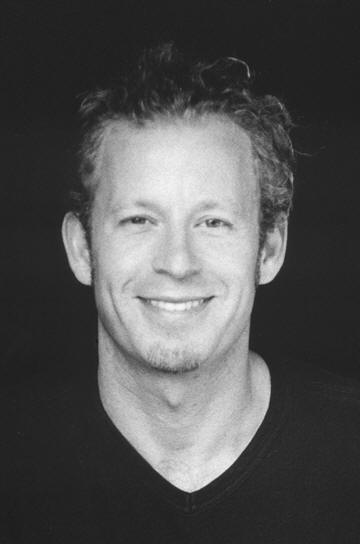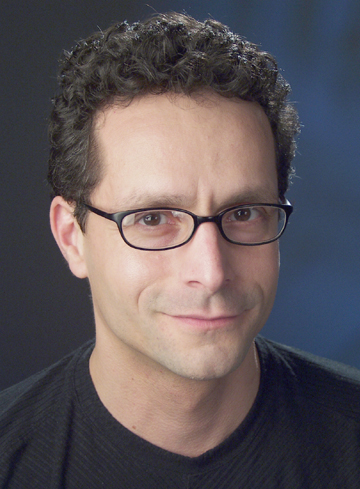Keynote Speakers
Sensitivity Analysis: Unexpected Outcomes in Art and Engineering
Ken Goldberg Professor of IEOR and EECS at UC Berkeley. His research addresses robot manipulation, geometric algorithms for automation, and networked robots. More information and online projects are linked from http://goldberg.berkeley.edu.
Abstract:
Contemporary art and engineering research are both at their best when things don't turn out as planned. I'll present selected examples based on artworks developed with students and other collaborators involving robots and networks over the past 20 years. These projects set out to investigate intersections of technology and nature, such as the Telegarden, a robot installation that allowed online participants to remotely tend a living garden; Ballet Mori, a classical dance performed to sounds triggered by live seismic data; and Demonstrate, where an ultra high-resolution video camera raised eyebrows at the 40th anniversary of the Free Speech Movement. Every project led to unexpected twists and complications.
I'll also argue that the languages of contemporary art and engineering research are complex, dynamic, and often frustratingly impenetrable to outsiders. In art, a blue disk can be a cliche, or, in the right place at the right time, profound. In engineering, analogous contexts determine the beauty of a coordinate frame or mathematical equation. In both spheres, aesthetic interpretation is based on knowledge of prior art and contemporary dialogues. Being so similar, it is not surprising that unexpected forces arise when these two spheres are brought together.
Bio:
Ken Goldberg is an artist and professor of engineering at UC Berkeley. Goldberg's art installations such as the Telegarden have been exhibited at the Whitney Biennial, Venice Biennale, Pompidou Center (Paris), Walker Art Center, Ars Electronica (Linz Austria), ZKM (Karlsruhe), ICC Biennale (Tokyo), Kwangju Biennale (Seoul), Artists Space, and The Kitchen (New York). He has held visiting positions at San Francisco Art Institute, MIT Media Lab, and Pasadena Art Center. The Tribe, a short film he co-wrote, was selected for the Sundance and Tribeca Film Festivals. Ballet Mori, a multi-media project he developed to commemorate the 1906 Earthquake, was performed by the SF Ballet at the San Francisco Opera House.
Goldberg is an IEEE Fellow and Vice President of Technical Activities for the Robotics and Automation Society. His PhD is in Computer Science from Carnegie Mellon University and he has published over 150 research papers on robotics, automation, and geometric algorithms. He is editor of several books, including The Robot in the Garden: Telerobotics and Telepistemology in the Age of the Internet (MIT Press, 2000). Goldberg is Founding Director of Berkeley's Art, Technology, and Culture Colloquium.
Goldberg was awarded the National Science Foundation Young Investigator Award in 1994, the NSF Presidential Faculty Fellowship in 1995, the Joseph Engelberger Robotics Award in 2000, the IEEE Major Educational Innovation Award in 2001.
Implicit Participation
Bradley Horowitz VP, Yahoo! Product Strategy Group
Abstract:
A new generation of simple, affordable and easy to use tools has led to what has been called the “democratization of publishing”. Anyone with a camera has become a “photographer”, with a keyboard an “author”, a microphone a “podcaster”, etc. As the means for production and distribution of content have become readily accessible, the most valuable inelastic commodity has become attention. In this talk we will describe both how Yahoo has been working to lower barriers to participation and turn every “consumer” into a “creator”, but also how we are using data mining techniques to help identify and leverage high-value content. Yahoo! is creating systems that engender mass participation but also that allow the “cream to rise” by ensuring that every user of the system creates value in his or her wake. Examples from widely available real-world products (such as Flickr, Yahoo! Answers, del.icio.us, upcoming.org, etc.) will be used as illustrations.
Bio:
Bradley Horowitz, vice president of Yahoo!'s product strategy group, leads Yahoo!'s efforts in building innovative products and technologies across the company. Horowitz is driving innovation and leveraging Yahoo!'s platform to deliver compelling Yahoo! products and services to a community of 500 million users. In addition, he is responsible for the company's initiative to open up its platform which includes overseeing the Yahoo! Developer Network (Y!DN). Previously, he managed a portfolio of products for Yahoo! including media search, desktop search and the Yahoo! Toolbar.
Prior to joining Yahoo!, Horowitz served as both the chief technical officer and the vice president of engineering for the Virage division of Autonomy, where he was responsible for the technical delivery of five major product lines. Prior to Autonomy, he founded Virage, the company widely recognized as the market creator and leader for advanced media indexing and analysis. Horowitz helped grow the company from "a garage startup" through its NASDAQ IPO.
Horowitz was a PhD candidate at the MIT Media Lab. While at the Media Lab, he worked on a number of topics related to computer vision, graphics and image processing, which resulted in a patented new technique for the recovery of structure, motion and camera parameters from video sequences.
Horowitz holds an MS in Media Science from MIT and a BS in Computer Science from the University of Michigan.

